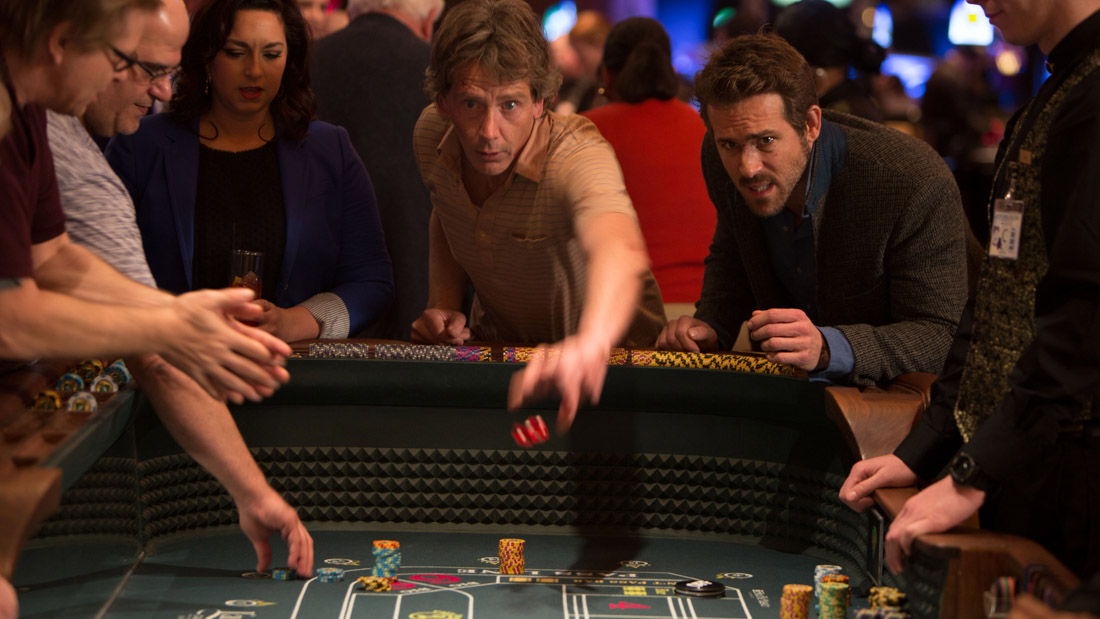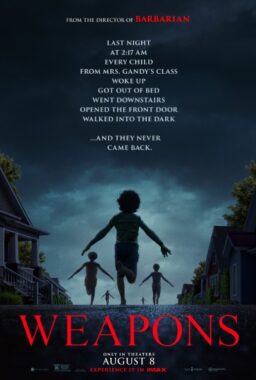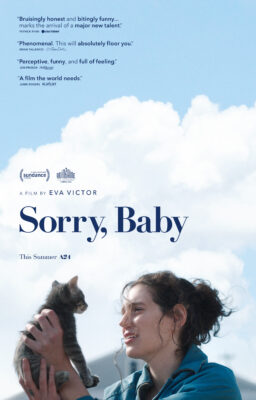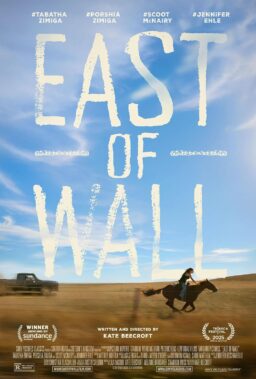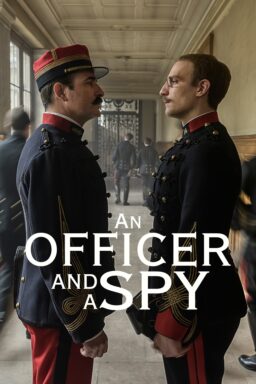BRIAN TALLERICO:
I was lucky
enough to have coffee with John Cooper & Trevor Groth, head programmers of
the Sundance Film Festival, and the Ebert Scholars (and Eric Kohn & Sam
Adams), on the first day of my third year in Park City. The conversation was a
stimulating one for sure, but I found Cooper & Groth’s answer to what
journalists get wrong about their fest most interesting. They expressed concern
that too many writers try to capture the entire event in their recaps and
reporting without recognizing that they’re only seeing a portion of it. With
over 120 films screening at Sundance this year, our entire staff on location
worked incredibly hard and didn’t even get to HALF of them. So, journalists who
like to claim it was a “good” or “bad” Sundance should recognize that they’re
only seeing a small portion of what’s been programmed. It’s true, and yet it’s
the first question we’re often asked upon return. Was it a good Sundance? So,
with the caveat that I saw 36 films—a ridiculous number that still doesn’t get
close to half—I would say it was a good-not-great one. My personal Park City
journey started incredibly rocky, going 2 “thumbs up” out of 10 films over the
first couple days. And then it really turned around. Sunday through Tuesday
were incredibly strong. So, I had a Tale of Two Sundances, and, as Mr. Cooper
and Mr. Groth would want me to note, only two Sundances out of hundreds
possible. My five best films:

“The End of the Tour”: Comparing a film to Richard Linklater’s
“Before” trilogy is not something I
do casually. And yet those films are the ones I kept returning to when
considering James Ponsoldt’s fantastic drama about David Foster Wallace. It has
been some time since a film featured such razor-sharp dialogue that I wanted to
go home and read the script as soon as possible. And to have these fascinating
conversations brought to life by two actors at the top of their game right now
only makes them more resonant. Read more.
“James White”: The most emotionally devastating
experience of Sundance 2015 (sorry, Dying Girl) is in Josh Mond’s brutal,
unsparing tale of youthful indiscretion defeated by the responsibility that
comes with caring for an ill parent. Cynthia Nixon has never been better and
Christopher Abbott may be relatively unknown at the beginning of 2015, but won’t
be by the end. Read more.
“Brooklyn”: It may be old-fashioned; it may be
sentimental; it may be melodramatic. I don’t care. John Crowley’s adaptation is
cut from the same emotional cloth as Jim Sheridan’s “In America,” and I adore
that film too. This is a work that people will fall rapturously in love with
when it’s released, holding it close to their heart for the rest of their
lives. My Italian-Irish background and general sentimentality may have made me
an easier target than some critics, but I can’t deny how emotionally I
responded to this piece. It’s really sweet. It’s really beautiful. And in a
rather cynical Sundance year, it was like a splash of cold water in the face—invigorating.
Read more.
“Me and Earl and the Dying Girl”: So much has already been written
about Alfonso Gomez-Rejon’s Grand Jury Prize winner that I think it’s likely
that many of you will be disappointed when you finally see it. It’s the odd
cycle of a Sundance film that can go from entirely unknown commodity to
overrated in a day. I hope viewers can go in as cold as possible because there’s
so much filmmaking joy on display here that it’s infectious. In the end, in
both Greg and Rachel’s arcs, it’s a film about the importance of art. It’s a
movie that left me not disappointed but wanting to go create something. It’s a
movie about death that made me want to leave a mark. That’s an accomplishment.
Read more.
“Dope”: The funniest, most vibrant film at
Sundance this year could arguably use one more edit to tighten some of its set
pieces and conversations, but it’s too much fun even as is to ignore. In Rick
Famuyiwa’s vision of modern Inglewood, kids don’t just observe pop culture,
they take it in and reconfigure it into an essential part of their lives. And
his ultimate point—that not only is judging a book by its cover misguided but
even the first few chapters may be misleading—has stunning social resonance in
an era when perception still fuels action. Read more.
SAM FRAGOSO:
Sundance is
great because the people who attend it are great. That’s what made reading
WIRED’s Jordan Crucchiola on journalists being the “worst people at Sundance” so
heartbreaking. No one gets into criticism for the money; it’s for the films,
and then the people whom you can talk about the films with afterwards.
Festivals like Sundance create this inimitable environment for people from all
walks of life—critics, distributors, artists, festival goers, locals—to talk
about the movies they’ve seen. Then, slowly, depending on the venue and alcohol
intake, various people engage in conversations that veer into something more
personal. Save for Crucchiola, everyone knows traversing Main Street, standing
in long lines at the Holiday theater, and paying for overpriced beverages/food
at the Yarrow are only worthwhile experiences because of the people you’re
surrounded by.
This was my
3rd time traveling out to Park City to cover Sundance. And I know only one
thing is certain about 2016: I’ll be back here again 11 months from now.

“Listen To
Me Marlon”: After
combing through over 300 hours of audio recordings, director Stevan Riley
created an unfettered document of Marlon Brando’s storied life. This is
Brando on Brando, granting us full access into the dark recesses of his mind.
The good, the bad, and the ugly of his life and career plastered onto the
silver screen. It’s as if Riley is giving Brando an opportunity to deliver one
last performance —his magnum opus. Read more.
“Tangerine”:
No film was
as formally interesting at Sundance than Sean Baker’s latest: a slick
uproarious seriocomedy shot on an iPhone 5s. Adorned with various aesthetically
spellbinding filters, Baker’s follow-up to “Starlet” is accompanied by an
unbeatable logline: “A working girl tears through Tinseltown on Christmas Eve
searching for the pimp who broke her heart.” And tear through grimy LA she
does.
“Western”: The more I sit with Bill
and Turner Ross’s latest examination of humanity, the more I love it. The
dynamic brother duo have created yet another inimitable experience. Stop, sit,
and watch as you sink lower in your seat, hypnotized by these people in front
of you —their moods oscillating from happy to sad rapidly, unexpectedly. Read more.
“The Royal
Road”: A cinematic
video essay that examines unconsummated love with intimacy and wit.
Writer/director Jenni Olson is a marvel. Read more.
“Mississippi
Grind”: There was no
film at Sundance that I enjoyed basking in more than Anna Boden and Ryan Fleck’s
wooly, restless “Mississippi Grind.” While not as emotionally impactful as some
of their previous efforts (“Half Nelson,” “It’s Kind of a Funny Story”),
this a tried-and-true road trip movie. Two addicted gamblers (played by Ben
Mendelsohn and Ryan Reynolds) travel down south to make money, pay off their
respective debts, and find happiness. Some of those goals are reached. Read more.
ERIK CHILDRESS:
Any festival
experience is directly related to just how good the films are. In my now 13th
year as a festival goer I have always proclaimed that if you can hit a 50/50
positive-to-negative ratio, that was a solid year. I saw 27 films in six days
at this year’s Sundance and I was positive on 14 of them. That is a pretty darn
good year, especially considering there have been years where I had seen over
30 films and liked less than 10.
Between the fun and
relaxed atmosphere of my condo (filled entirely by members of the Chicago Film
Critics Association), the sometimes beautiful weather unmatched in the 12 years
prior (either a result of the fest taking place a week later or the whole
global warming thing) and keeping a closer ear on avoiding the negative buzz on
a few films I scheduled, 2015 was kind of the perfect storm on how to enjoy a
festival.
Now here are five
films I will not be forgetting anytime soon.

“Me and
Earl and the Dying Girl”: If you are the kind of person who discovered The Criterion Collection
on laserdisc, thought “Be Kind Rewind” didn’t go far enough and
“The Fault In Our Stars” went too far, or was just an awkward
teenager that grew up with a big heart, it is impossible to not kind of love
this film. Director Alfonso Gomez-Rejon makes one of the better coming-of-age
tales out of Jesse Andrews’ 2013 book that moviegoers of all backgrounds and
cinephiles of all aesthetics should appreciate. Read more.
“Call Me Lucky”: Bobcat Goldthwait remains one of the most interesting
voices in cinema and this time he turns to the documentary form to allow
another voice to take center stage. The story of ’80s stand-up Barry Crimmins
is an emotional landslide of comedy, politics, pain and, ultimately, activism.
The double standing ovation the premiere received for Goldthwait and Crimmins
was not just deserved, but essential. Read more.
“Mississippi
Grind”: Joining the likes of
films such as “California Split“, “Owning Mahowny” and
1974’s “The Gambler,” this was a welcome return to form for the
voices of Anna Boden and Ryan Fleck. Ben Mendelsohn and Ryan Reynolds are both
excellent as the traveling gamblers seemingly on the road to either redemption
or nowhere. Read more.
“The Hunting
Ground”: Kirby Dick has been
doing some of the most important work in documentaries for the past decade and
this is no exception. A companion piece to “The Invisible War“, this
moves the discussion of the rampant cover-up of rape from the military to
college campuses everywhere. Another infuriating experience that rightfully
shames universities and at least one potential NFL prospect.
“The Tribe”: It was not a Sundance premiere, but catching up on Miroslav
Slaboshpitsky’s daring debut utilizing sign language (without subtitles or a
single voice) and bold single take vignettes was a disturbing, uncomfortable
and yet riveting endeavor destined to join the infamous pile of titles like
Larry Clark’s “Kids” and Gaspar Noé’s “Irreversible.”
